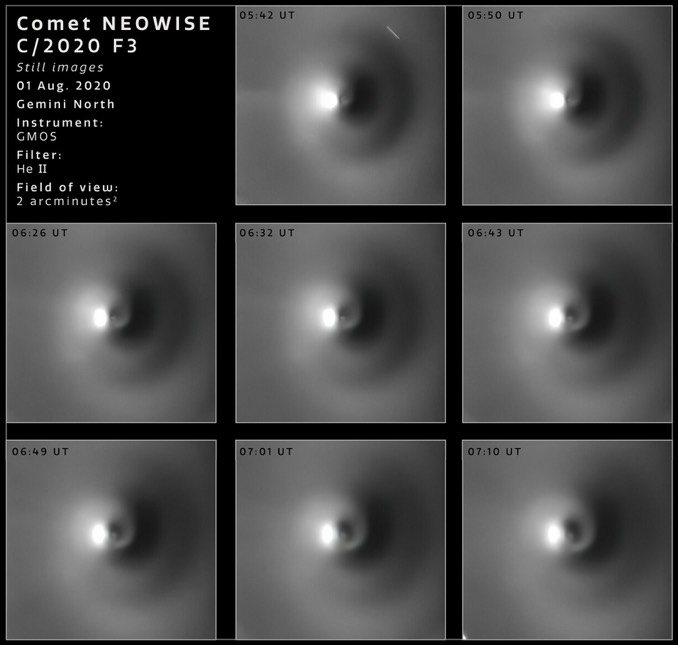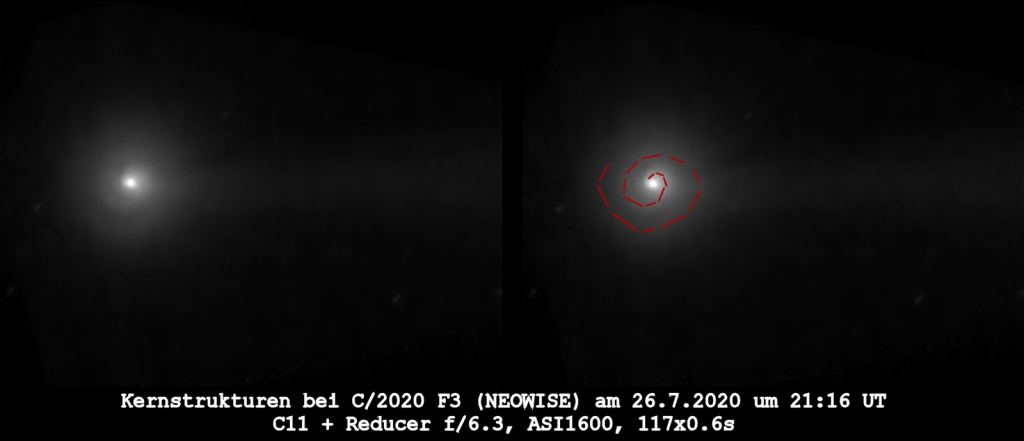Earlier this week, we shared an image of Comet NEOWISE (C/2020 F3) taken by the Hubble Space Telescope. And now, here are a group of images from the 8.1-metre Gemini North telescope in Hawaii. Like Hubble, Gemini North focused in on the comet’s nucleus and coma, instead of its stunning, gossamer tails. But Gemini zoomed in and caught something Hubble didn’t: Comet NEOWISE was rotating, which created a spiraling stream of molecular gas.
The close-up observations, led by Michal Drahus and Piotr Guzik of Jagiellonian University in Krakow, who were looking to try and see and study the rotational dynamics of the comet. Despite limitations imposed by the comet’s proximity to the Sun, the researchers were able to confirm a 7.5-hour rotation period by measuring the spiral outflow of molecular gas as NEOWISE spun about.

Here’s a timelapse video created by all the images taken by the team at Gemini North:
The prevailing notion is that most comets “release gasses in geyser-like jets and that is what researchers think is happening in the Gemini images,” the National Science Foundation’s NOIRLab said in a description. NOIRLab is US national center for ground-based, nighttime optical and infrared astronomy. “As the vaporized material erupts from the comet its rotation causes it to appear to spiral outward, much like the water from a spinning garden hose. The very same material impacts the comet’s rotation causing its nucleus to spin-up or spin-down, though for most comets, the effect is too weak to detect.”
In another set of impressive ground-based observations, an amateur astrophotographer from Germany, Bernd Gährken, was also able to capture some of the rotation as well.

Gährken was able to see the details of the spiral rotation, and he created a gif animation:

You can see more of his Comet NEOWISE images at his website.
Astronomers will certainly be studying Comet NEOWISE’s fascinating pass by our planet for quite some time!
